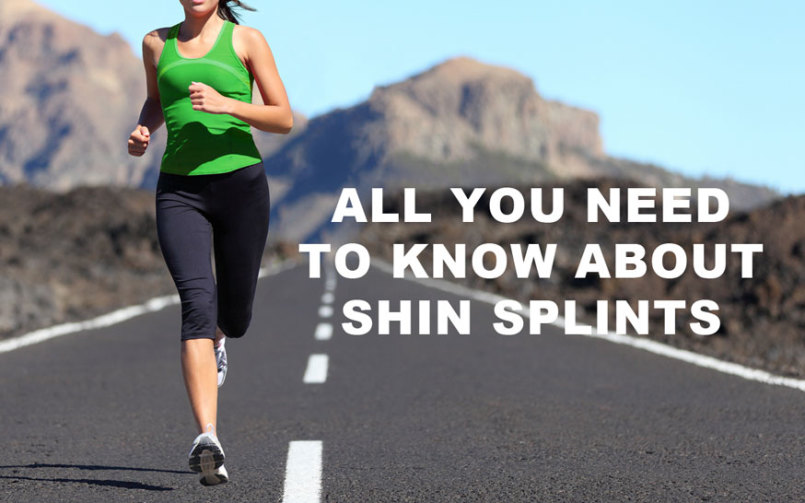
What are Shin Splints
Shin splints is a general term used to refer to a painful condition in the shins. It is often caused by running or jumping, and may be very slow to heal. A formal medical term for the condition is medial tibial syndrome.
Shin splints is the general name given to pain at the front of the lower leg. Shin splints is not a diagnosis in itself but a description of symptoms of which there could be a number of causes. The most common cause is inflammation of the periostium of the tibia (sheath surrounding the bone). Traction forces occur from the muscles of the lower leg on the periostium causing shin pain and inflammation.
Symptoms of shin splints:
- Tenderness over the inside of the shin.
- Lower leg pain which goes after a period of rest but comes back when running starts again.
- Sometimes some swelling.
- Lumps and bumps may be felt when feeling the inside of the shin bone.
- Pain when the toes or foot are bent downwards.
- A redness over the inside of the shin.
Shin Splints Treatment
Treatment for shin splints is a simple as reducing pain and inflammation, identifying training and biomechancial problems which may have helped cause the injury initially, restoring muscles to their original condition and gradually returning to training.
What can the athlete do about shin splints?
- Rest to allow the injury to heal.
- Apply ice or cold therapy in the early stages, particularly when it is very painful. Cold therapy reduces pain and inflammation.
- Stretch the muscles of the lower leg. In particular the tibialis posterior is associated with shin splints.
- Wear shock absorbing insoles in shoes. This helps reduce the shock on the lower leg.
- Maintain fitness with other non weight bearing exercises such as swimming, cycling or running in water.
- Apply heat and use a heat retainer or shin and calf support after the initial acute stage and particularly before training. This can provide support and compression to the lower leg helping to reduce the strain on the muscles. It will also retain the natural heat which causes blood vessels to dilate and increases the flow of blood to the tissues.
- Visit a sports injury clinic for treatment and rehabilitation.
What can a sports injury clinic or doctor do?
- Prescribe anti-inflammatory medication e.g. ibuprofen. (Always consult a doctor before taking medication).
- Tape the ankle for support. – A taping worn all day will allow the shin to rest properly by taking the pressure off the muscle attachments.
- Perform gait analysis to determine if you overpronate or oversupinate
- Use sports massage techniques on the posterior deep muscle compartment but avoid the inflamed periostium.
- Operate
- Anti inflammatory drugs along with rest and ice can help reduce inflammation, particularly in the early stages. However if the underlying causes such as tight muscles are not treated through stretching and sports massage techniques then the likelihood of the injury returning is higher.
Which products can help with treatment of shin splints?
Some products which can help with treatment and prevention of shin splints are outlined below. Please consult your therapist before using any products as they may not be compatible with your particular therapists approach to treatment.
Shock absorbing insoles… Shock absorbing insoles can help reduce the shock and impact transmitted through the foot to the lower leg, particularly when running on hard surfaces for long periods of time.
Orthotic insoles… Orthotic insoles are firm insoles designed to correct biomechanical dysfunction such as over pronation. They will usually have strong arch support. Off the shelf orthotic insoles are available and suitable for many, although for the perfect fit a Podiatrist will make them specifically for your feet.
You must be logged in to post a comment.